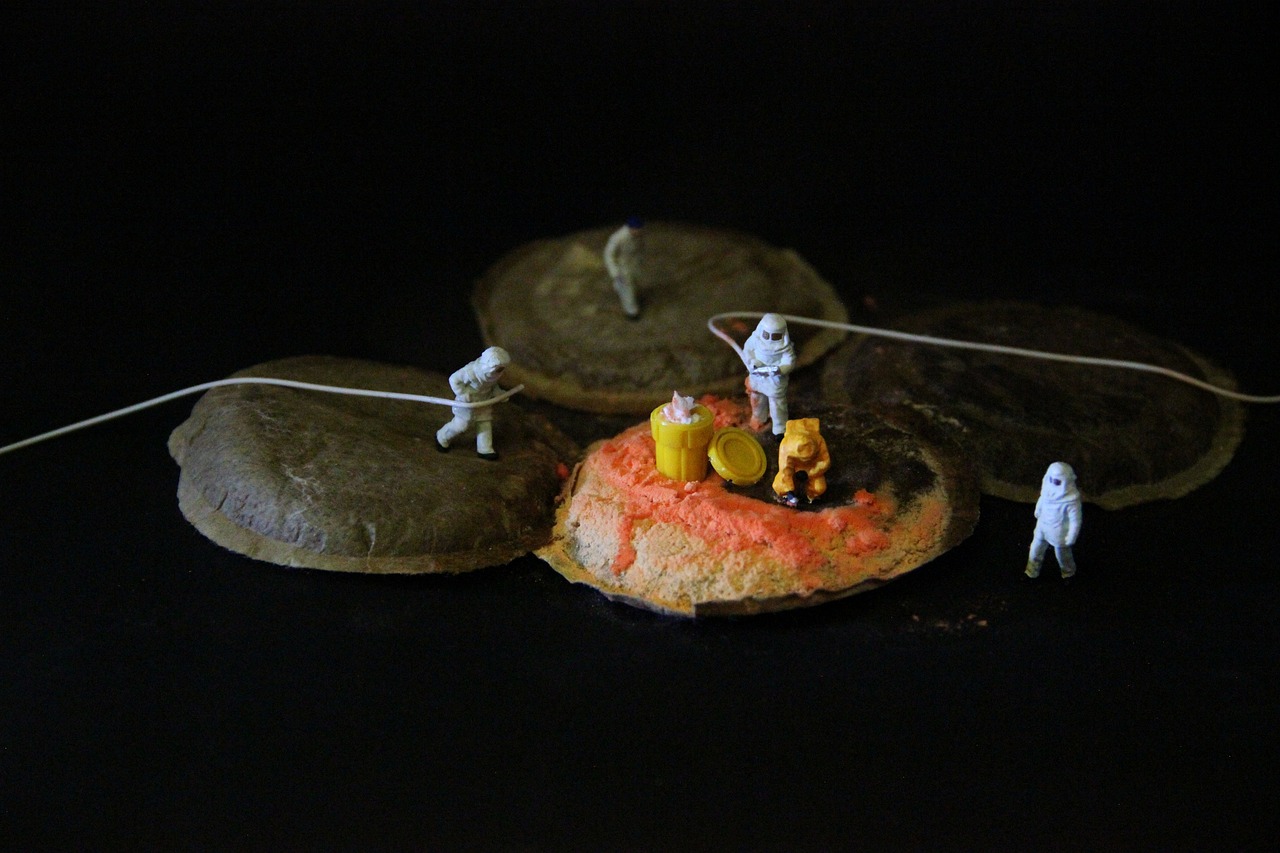Are you a coffee lover who wants to enjoy a delicious cup of coffee at home? If so, a coffee maker is an essential appliance that you must have in your kitchen. However, using a coffee maker can be intimidating, especially if you are unfamiliar with its components or how to maintain it properly.
In this article, we’ve got you covered. We will go over everything you need to know about coffee makers, from their anatomy to how to use them correctly and how to maintain them. By the end of this article, you will have all the necessary information to become a coffee maker pro and enjoy a perfect cup of coffee in no time.
Coffee makers are the perfect appliances for people who want to enjoy the convenience of brewing coffee at home. But they can also be complex machines that require proper care and maintenance to ensure their longevity. Join us as we explore the basics of coffee makers and share some tips on how to use and maintain them so you can make the most out of your coffee maker.
The Anatomy of a Coffee Maker
Before you start making your coffee, it is important to know the anatomy of your coffee maker. Knowing the different parts of your coffee maker and their functions will make it easier for you to troubleshoot any problems and make better use of your machine. Here are the different parts of a coffee maker and what they do:
| Part Name | Function |
|---|---|
| Water Reservoir | This is where you pour water into the coffee maker. The water is then heated and passed through the coffee grounds to make the coffee. |
| Carafe | This is where the brewed coffee is stored. The carafe is made of either glass or stainless steel. |
| Brew Basket | This is where you place the coffee grounds. It is usually located above the carafe and below the water reservoir. |
| Heating Plate | This is where the carafe sits to keep the coffee warm. It is usually located at the bottom of the coffee maker. |
| Control Panel | This is where you set the options for brewing your coffee. It usually includes buttons and/or a display screen. |
Understanding the anatomy of your coffee maker will help you to troubleshoot any issues that may arise, such as leaks or malfunctions. Additionally, knowing the different parts of your coffee maker will help you to use it more efficiently and effectively. In the next section, we will explore different types of coffee makers and their features.
Types of Coffee Makers
When it comes to coffee makers, there are various types available, each with its unique way of brewing coffee. The most common types of coffee makers include drip coffee makers, single-serve or pod coffee makers, French press, and percolator coffee makers.
Drip coffee makers are the most popular type of coffee maker, and they work by heating water and dripping it through the coffee grounds to produce a brewed coffee. They are easy to use, and some high-end models come with programmable settings, allowing you to set your coffee to brew at a specific time.
Single-serve coffee makers, also known as pod coffee makers, have become increasingly popular in recent years. They use pre-packaged pods or capsules filled with coffee to produce a single cup. They come in different styles and sizes, and some models have the option to brew coffee, tea, or even hot chocolate.
French press coffee makers use a simple and traditional method of brewing coffee. They work by steeping coffee grounds in hot water and pushing the plunger down to separate the coffee from the grounds. This produces a strong and rich coffee flavor.
Percolator coffee makers are another traditional method of brewing coffee, and they work by boiling water and cycling it through the coffee grounds multiple times. They produce a strong and robust coffee flavor, making them a popular option for coffee enthusiasts.
Drip Coffee Makers
Drip coffee makers are the go-to choice for many coffee drinkers. They are easy to use and can make a large amount of coffee at once. Here’s how to use a drip coffee maker:
- Fill the water reservoir with cold, fresh water. Make sure to check the water level and fill it up to the appropriate amount.
- Place a paper filter in the filter basket and add your coffee grounds. Most coffee makers recommend using one tablespoon of coffee grounds per cup of water.
- Place the carafe under the filter basket and turn on the coffee maker.
- Wait until the coffee maker finishes brewing the coffee, and then turn off the machine.
With drip coffee makers, the type and quality of the coffee beans you use can make a big difference in the taste of your coffee. If you want the best-tasting coffee possible, consider grinding your own beans. Freshly ground coffee tastes significantly better than pre-ground coffee.
Another tip for getting the best-tasting coffee from your drip coffee maker is to clean it regularly. The build-up of coffee residue and oils can affect the flavor of the coffee, so it’s essential to clean the coffee maker after every use. Check the manufacturer’s instructions to see the recommended cleaning procedure.
If you follow these tips, you can enjoy a delicious cup of coffee every time you use your drip coffee maker.
Single Serve Coffee Makers
Single-serve coffee makers are perfect for those who only want to make a cup or two of coffee at a time, without the hassle of brewing a whole pot. Also known as pod coffee makers, they use pre-packaged pods containing coffee grounds to brew your coffee quickly. There are a few things to keep in mind before using your single-serve coffee maker.
- Make sure to read the instructions carefully before use, as each model may have different requirements for pod size and water measurements.
- Choose the right pod for your taste preference, as the pod’s content can significantly impact the taste and strength of your coffee.
- Never let the water reservoir run out of water, as this can cause severe damage to your machine.
To use a single-serve coffee maker, simply insert the pod into the machine, press the button to start the brewing process, and wait for your coffee to be ready. After use, make sure to dispose of the used pod and clean the machine thoroughly to prevent the build-up of bacteria and other contaminants.
How to Use Your Coffee Maker
Now that you have an understanding of the anatomy of your coffee maker let’s get into how to use it. As mentioned earlier, there are different types of coffee makers, and we’re going to focus on two of the most popular – drip and single-serve coffee makers. Here’s how you can use them:
How to Use a Drip Coffee Maker:
Step 1: Fill the reservoir with cold water according to the manufacturer’s instructions.
Step 2: Measure out the coffee grounds. A good rule of thumb is two tablespoons of coffee grounds for every six ounces of water, but feel free to adjust according to your taste preferences.
Step 3: Place a coffee filter in the filter basket and add the coffee grounds.
Step 4: Turn on the coffee maker and wait for your coffee to brew.
Step 5: Once the brewing is complete, turn off the coffee maker and pour yourself a cup of coffee.
Step 6: After use, make sure to clean the coffee maker according to the manufacturer’s instructions.
How to Use a Single Serve Coffee Maker:
Step 1: Fill the reservoir with cold water, according to the manufacturer’s instructions.
Step 2: Choose a coffee pod and place it in the pod holder, following the manufacturer’s instructions.
Step 3: Press the button to brew your coffee, and wait for it to finish brewing.
Step 4: Once the brewing is complete, remove the used coffee pod and dispose of it.
Step 5: After use, ensure that you clean the coffee maker according to the manufacturer’s instructions to keep it in good condition.
By following these simple steps, you’ll be able to brew your coffee with ease and enjoy a perfect cup of coffee every time.
How to Use a Drip Coffee Maker
A drip coffee maker is a straightforward coffee-making machine that brews coffee by using hot water that drips onto ground coffee beans. Follow these steps to make the perfect cup of drip coffee:
Step 1: Gather Supplies
Before you start brewing, gather the following supplies:
- Coffee maker
- Coffee filters
- Coffee grounds
- Water
- Coffee mug
Step 2: Add Water and Coffee Grounds
Add the desired amount of water to the water reservoir and fill the coffee filter with the appropriate amount of coffee grounds based on the manufacturer’s instructions.
Step 3: Start the Machine
Close the coffee maker’s lid and start the brewing process. The hot water will drip onto the coffee grounds in the filter, allowing the coffee to brew. Wait until the brewing process is finished, which typically takes about 10-15 minutes for a full pot of coffee.
Step 4: Pour and Enjoy
Once your coffee is ready, pour it into a mug and enjoy it with your favorite creamer or sweetener.
Step 5: Clean Your Coffee Maker
After use, it’s essential to clean your coffee maker to ensure it maintains its quality and longevity. Remove the used coffee filter and wash the coffee pot and machine’s exterior with warm, soapy water. Wipe down the machine’s surface to ensure it’s free from coffee stains and grounds.
Follow these simple steps every time, and you’ll be brewing the perfect cup of drip coffee in no time!
How to Use a Single Serve Coffee Maker
Single-serve coffee makers, often known as pod coffee makers, are a quick and easy way to brew coffee. These machines use pre-packaged coffee pods or capsules to make individual servings of coffee. Here’s how to use one:
Step 1: Choose the Right Pod
Before using your single-serve coffee maker, it’s essential to choose the right pod. Different brands of coffee makers have their compatible pods, so be sure to read the manufacturer’s instructions before purchasing. After choosing the right pod, insert it into the slot provided on the machine.
Step 2: Fill the Water Tank
Since single-serve coffee makers only make one cup at a time, the water tank is typically smaller. Fill the tank according to the manufacturer’s instructions and place it back firmly in its place.
Step 3: Brew Your Coffee
Once the pod is in place and the water tank is full, turn on the machine and select your preferred cup size. Within a few seconds, your coffee will be ready to serve.
Step 4: Clean the Machine
Cleaning a single-serve coffee maker is straightforward. After you’ve finished brewing your coffee, remove the used pod and throw it away and wipe down the machine’s exterior. Most manufacturers advise descaling the machine every three months to keep it functioning efficiently and ensure it lasts a long time.
By following these simple steps, you can enjoy a freshly brewed cup of coffee with ease.
Maintenance Tips for Your Coffee Maker
A coffee maker is an essential appliance in many households, and it’s important to keep it in good condition to ensure it works optimally and lasts a long time. Here are some maintenance tips to keep your coffee maker in great condition:
- Clean your coffee maker after every use: Regular cleaning is necessary to prevent the build-up of coffee oils and mineral deposits.
- Use vinegar for cleaning: A mixture of water and white vinegar is an excellent way to clean your coffee maker. Fill the water reservoir with equal parts vinegar and water, run a brewing cycle, and then run two to three additional cycles with just water to rinse.
- Decalcify: Over time, the build-up of mineral deposits can affect the performance of your coffee maker. Decalcify your coffee maker every three to six months to remove any build-up. Follow your manufacturer’s instructions or use a decalcifying solution.
- Replace your coffee maker’s water filter: If your coffee maker has a water filter, it’s important to replace it regularly to ensure your coffee tastes great. Follow the manufacturer’s instructions on replacement frequency.
- Store your coffee maker properly: When not in use, keep your coffee maker in a dry, cool place to prevent damage or deterioration.
By following these maintenance tips, you can keep your coffee maker in great condition and enjoy a fresh cup of coffee whenever you want.
Cleaning Your Coffee Maker
Regular cleaning is crucial to ensure that your coffee maker is producing tasty coffee and working efficiently. Cleaning your coffee maker is relatively easy and can help increase the lifespan of your machine. Below are some steps to follow when cleaning both drip and single-serve coffee makers properly:
- Turn off and unplug your coffee maker before cleaning.
- Empty any leftover coffee or pods and remove any detachable parts like the filter or the mug holder.
- Dismantle any parts that can be removed safely, and wash them in soapy water or put them in the dishwasher if they are dishwasher safe.
- Use a solution of equal parts water and white vinegar to clean any remaining parts of the coffee maker. Pour the solution into the coffee maker’s water reservoir and turn on the machine.
- Run the machine through a brewing cycle with the vinegar solution. Once the cycle is complete, discard the solution and fill the tank with clean water.
- Repeat the brewing cycle with clean water to remove any vinegar residue.
- Wipe down the exterior of the coffee maker with a damp cloth and dryer before plugging it back in.
Cleaning your coffee maker is an essential step to ensure it produces excellent coffee and lasts a long time. Follow these easy steps to keep your machine looking and working great.
Decalcifying Your Coffee Maker
As time goes by and you use your coffee maker, mineral deposits can start building up, affecting the performance of your machine. Decalcifying your coffee maker is an essential part of maintaining it and ensuring it works correctly. Decalcifying your coffee maker removes the mineral buildup, which can affect the taste of your coffee and potentially cause damage to the machine.
Fortunately, decalcifying your coffee maker is a simple process. You will need white vinegar and water to do this. For most coffee makers, you will use a mixture of half vinegar and half water. Follow the steps below:
- Fill your coffee maker’s reservoir with the vinegar and water mixture.
- Start the brewing process and let half of the mixture run through the coffee maker.
- Turn off the coffee maker and let it sit for 30 minutes to an hour.
- Turn on the coffee maker again and let the remaining mixture run through.
- Fill the coffee maker’s reservoir with fresh water and run a complete cycle to rinse it out. Repeat this process until there is no odor or taste of vinegar.
It’s important to read your coffee maker’s manual to ensure that it is safe to use vinegar for decalcifying the machine. If not, there are alternative decalcifying solutions available in the market that are safe to use.
By decalcifying your coffee maker regularly, you can ensure that it remains in great condition, lasts longer, and continues to produce delicious coffee. Decalcifying your coffee maker is a simple and easy process that can make a huge difference in the quality of your coffee.
FAQs
If you’re new to using a coffee maker, or just looking for some helpful tips, check out these frequently asked questions:
- How often should I clean my coffee maker? It’s best to clean your coffee maker after every use. This helps prevent the build-up of coffee oils and keeps your coffee tasting fresh.
- What is the best way to clean a coffee maker? A mixture of water and white vinegar is an excellent way to clean a coffee maker. Fill the water reservoir with equal parts water and white vinegar, then run a cycle. Once the cycle is complete, run a cycle of plain water to rinse out any remaining vinegar.
- How often should I decalcify my coffee maker? It is recommended to decalcify your coffee maker every three to six months. This helps remove mineral build-up that can affect your coffee maker’s performance and longevity.
By following these maintenance tips and frequently asked questions, you can keep your coffee maker in good condition and enjoy a fresh cup of coffee every time.
How often should I clean my coffee maker?
If you’re wondering how often you should clean your coffee maker, the answer is simple – after every use. It’s essential to clean your coffee maker regularly to ensure that it doesn’t become a breeding ground for bacteria, fungi, or mold that can affect the taste and quality of your coffee. A dirty coffee maker can also lead to clogs, which can affect the flow of water and result in weaker coffee.
Cleaning your coffee maker after every use is easy. All you need to do is remove the used coffee grounds, rinse the carafe and filter basket with warm water, and wipe down the exterior with a damp cloth. To ensure that your coffee maker stays in good condition, it’s also advisable to descale it every three to six months, depending on how frequently you use it. Descaling involves using a vinegar solution to remove mineral buildup that can affect the taste and quality of your coffee.
What is the best way to clean a coffee maker?
What is the best way to clean a coffee maker?
The best way to clean a coffee maker is by using a mixture of water and white vinegar. This solution is effective in removing any mineral deposits, oils, and other buildup that can affect the taste and quality of your coffee or hinder the performance of your coffee maker. Here’s a step-by-step guide on how to clean your coffee maker using this solution:
- Fill the reservoir of your coffee maker with equal parts of water and white vinegar.
- Start the coffee maker and let it run until it finishes the cycle.
- Dispose of the solution and repeat the process with just water to rinse the coffee maker.
- Run a couple of cycles with clean water to ensure that no vinegar residue is left behind.
Apart from this, it’s essential to clean the carafe and coffee filter regularly. To clean the carafe, fill it with warm soapy water and scrub it with a non-abrasive sponge. Rinse it thoroughly and let it dry. For the coffee filter, wash it with warm soapy water or put it in the dishwasher if it’s dishwasher-safe.
By following these simple cleaning steps, you can keep your coffee maker in excellent condition and enjoy a delicious cup of coffee every time.
How often should I decalcify my coffee maker?
Decalcifying your coffee maker is an essential part of its maintenance routine. Over time, calcium and mineral deposits can build up in your coffee maker, affecting its performance and even damaging it. That’s why it’s recommended to decalcify your coffee maker every three to six months, depending on its usage frequency.
To decalcify your coffee maker, you’ll need to use a cleaning solution that is specifically designed for this purpose. Some coffee makers come with decalcifying agents, but you can also make your own using a mixture of water and white vinegar. The ratio of water to vinegar will depend on your coffee maker’s model, so be sure to check the instructions before starting.
Before decalcifying your coffee maker, make sure to empty any leftover water or coffee from the machine, and remove any used coffee grounds. Then, fill the water reservoir with the decalcifying solution and run a cycle as if you were brewing coffee. Once the cycle is complete, rinse the machine thoroughly with water to remove any leftover solution. Repeat the process if necessary.
Regular decalcification of your coffee maker will keep it running smoothly and producing great-tasting coffee. Neglecting this crucial routine may result in poor performance, shorter lifespan, and a less-than-perfect cup of coffee. So, make sure to set a reminder and decalcify your coffee maker regularly to keep it in great condition.
Conclusion
Conclusion
Coffee makers are essential appliances for coffee lovers who want to enjoy a fresh cup of coffee every morning. With the tips and tricks learned from this article, it’s easier than ever to use and maintain your coffee maker properly to produce tasty coffee that always hits the spot. By understanding the different types of coffee makers and their respective functions, you can find the one that suits your needs.
Remember to clean your coffee maker after each use and decalcify it regularly to ensure it remains in great condition and lasts a long time. Cleaning and decalcifying your coffee maker only takes a few minutes and is worth the effort to enjoy the perfect cup of coffee.
Whether you prefer a drip coffee maker or a single-serve coffee maker, this article covers how to use and maintain both types correctly. So, next time you want a cup of coffee, make sure to use the tips, and tricks learned in this article to enjoy a fresh and unforgettable taste that will make your day.






